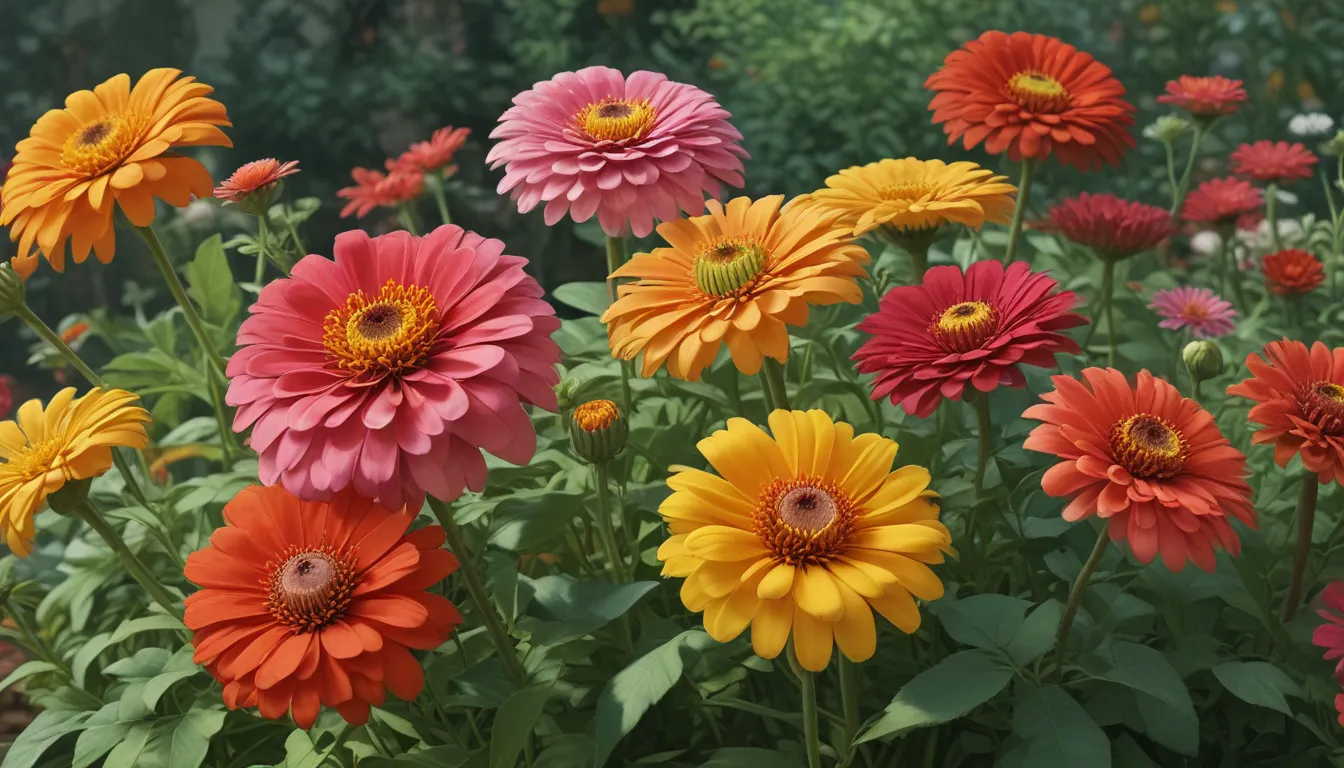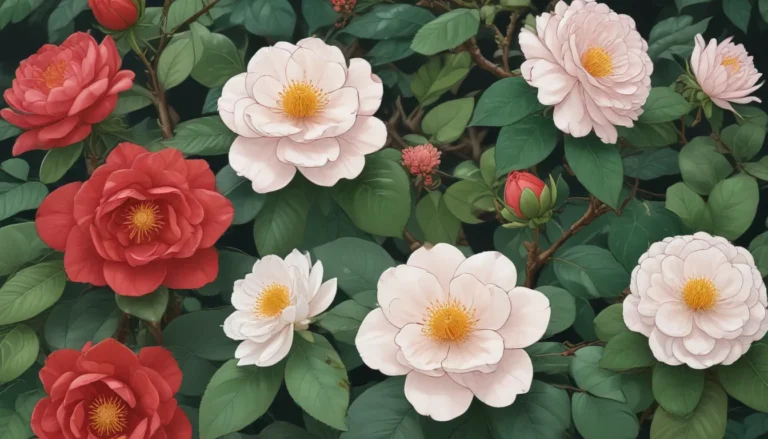A Comprehensive Guide to Growing Vibrant Zinnia Flowers

Zinnias are celebrated for their dazzling, colorful blooms that steal the show in gardens all summer long. These stunning annuals are not only captivating but also incredibly easy to grow. In this guide, we will delve into the world of zinnias, exploring everything from cultivation to maintenance, so you can impress your neighbors with minimal effort.
Introduction to Zinnias
Zinnias belong to the genus of flowering annuals in the Asteraceae family and can thrive in USDA Hardiness Zones 3 to 10. These beauties showcase upright stems with vibrant solitary flower heads that produce large, eye-catching blooms throughout the summer. Zinnias attract a variety of beneficial insects, including hummingbirds and butterflies.
Though there are over 20 known wild species, only a few are commonly available commercially. Through extensive breeding, these species have been developed into hundreds of cultivars showcasing flowers of various shapes and colors. Zinnia elegans is the primary cultivated species, with Z. angustifolia and Z. haageana also making appearances in the zinnia family.
Cultivation and History
Zinnias have a rich historical background, with wild species believed to have been cultivated as far back as the 1500s by the Aztecs. Tales of German botanist Gottfried Zinn being confronted by bandits in Mexico may be colorful but are unlikely to be true.
These captivating flowers traveled from Mexico to Europe in the 1700s, underwent breeding to develop different traits, and eventually made their way back to North America, captivating gardeners in the early 1800s. The proliferation of zinnia cultivars has made them one of the most popular garden annuals, with some even making an appearance aboard the International Space Station.
Propagation
Zinnias are a breeze to grow from seeds. Whether sowing directly in the garden or starting them indoors for later transplanting, zinnias require minimal care. When starting from seed, sow them 1/4 inch deep in well-draining soil. If transplanting, be cautious with the roots to ensure a successful move outdoors after the last frost.
Roots of zinnias are sensitive, so starting them outdoors in regions with a longer growing season is ideal. However, in cooler areas, transplanting indoors using biodegradable containers can be effective. Remember to harden off seedlings before planting them outdoors permanently.
How to Grow
Zinnias thrive in full sun with well-draining soil amended with organic matter. Adequate spacing is crucial to promote airflow and deter fungal conditions like powdery mildew. Water young plants deeply to encourage establishment, and consider using a soaker hose to avoid drenching foliage.
While zinnias don’t require extensive feeding, a light application of balanced organic fertilizer and monthly foliar feeds can enhance bloom size. Remember to avoid high nitrogen fertilizers that promote foliage growth over flowering.
Maintenance
Regular deadheading and pinching can extend zinnias’ blooming season significantly. Deadheading removes spent blooms to encourage new growth, while pinching growing tips can increase branching. To save seeds, allow some flowers to mature fully before collecting and storing them for the next season.
Cultivars to Select
With a plethora of zinnia cultivars to choose from, selecting the right one can be overwhelming. From compact varieties like Chippendale Daisy and Crystal to heirloom options like Dahlia Flowered Mix, the choices are endless. Whether you prefer single, double, or semi-double petal arrangements, there’s a zinnia cultivar out there for everyone.
Managing Pests and Disease
Zinnias are generally resilient to pests and diseases, but occasional issues may arise. Insects like aphids, caterpillars, Japanese beetles, and spider mites can pose a threat. While handpicking and natural predators can control these pests, diseases like Alternaria Leaf Spot, Bacterial Leaf Spot, Cercospora Leaf Spot, and Powdery Mildew can be mitigated by providing good airflow and avoiding overhead watering.
Best Uses
Zinnias are versatile flowers that can brighten up any garden space. Whether planted in mixed borders, mass plantings, or in containers, zinnias are sure to steal the spotlight. Beyond their aesthetic appeal, zinnias attract beneficial insects and can be enjoyed as cut or dried flowers. Their long-lasting blooms make them a popular choice for flower arrangements.
Quick Reference Growing Guide
- Plant Type: Annual flower
- Flower/Foliage Color: Various/green
- Native to: Mexico
- Hardiness (USDA Zone): 3-10
- Season: Mid to late summer
- Exposure: Full sun
- Soil pH: 5.5-7.5
- Height: Up to 4 feet (standard), 6-12 inches (dwarf)
- Water Needs: Moderate
- Family: Asteraceae
- Genus: Zinnia
Grow a Rainbow with Zinnias
Zinnias are the perfect addition to any garden, offering vibrant colors that attract a variety of pollinators. With minimal effort, you can enjoy a summer filled with dazzling zinnia blooms. So plant some zinnias this season, sit back, and watch nature’s beauty unfold in your garden.
Share your zinnia growing experiences and pictures in the comments below! Let’s celebrate the joy of growing these spectacular flowers together.
If you’re looking for more annual flowers to enhance your garden, don’t miss out on our guides to Crazy, Colorful Celosia, Snapdragon, and Marigold.
Remember, zinnias are your ticket to a garden blooming with a rainbow of colors. So what are you waiting for? Let’s grow zinnias and transform our gardens into stunning displays of nature’s beauty!





